Tritton’s Legacy
By Mary Howells, 2022 Queensland Business Leaders Hall of Fame Fellow | 19 December 2023
Guest blogger: Mary Howells - 2022 Queensland Business Leaders Hall of Fame Fellow.
The family home of Fred and Eliza Tritton, Elderslie, still exists, albeit in a new location. It was relocated from Clayfield to Airlie Road, Pullenvale in the mid-1980s, following the deaths of many family members and the closure of the business.
Eliza Tritton died in 1968, aged 97. She had been honoured with an Order of the British Empire (OBE) in 1963 in recognition of her charitable works, including the establishment of what is now St Luke’s Nursing Service. After her death, her son Roy and his wife Irene moved into Elderslie, as did Cyril. Roy died in 1973. Irene died the following year. Fred and Eliza’s daughter, Ivy Shaw, died in 1976. Elderslie was auctioned in 1979 as part of the winding up of the estate of Roy Tritton. (1)
A joint decision between the remaining family members and the board, led to the closure of F Tritton’s Furniture in the early 1980s. Ken Tritton registered his own business in October 1980 and continued managing the Nambour Store. All of Tritton’s properties were sold to State Government Insurance Office (SGIO, later Suncorp) in 1981. The contract on the George Street Store was signed on 25 May. Ken Tritton then purchased the Nambour store from SGIO. Coupon was wound-up in 1983 and Trittons in 1985. The George Street Store was demolished between June and October 1986; a century after Fred and Charles Tritton established their little second-hand shop in Woolloongabba. Ken Tritton managed the Nambour store until his retirement in 1997. Trend Furniture was deregistered in 2011. (2)
Trittons Clearance Sale, Sunday Mail, 24 May 1981, p.2 The George Street buildings were sold to SGIO on 25 May 1981.
Queensland Aerial Photo QAP4601246, 8 October 1986, shows a vacant allotment where Trittons store once stood (to the left of the Victoria Bridge). The State Library of Queensland, South Brisbane, is under construction. Queensland Government Creative Commons Copyright.
While the business no longer exists, many professional furniture restorers proudly offer their renewed Trittons pieces for sale. Second-hand online markets promote the sale of Trittons furniture based on its reputation of quality and value for money. Many owners have retained the dockets or tickets associated with their items, to prove its provenance.
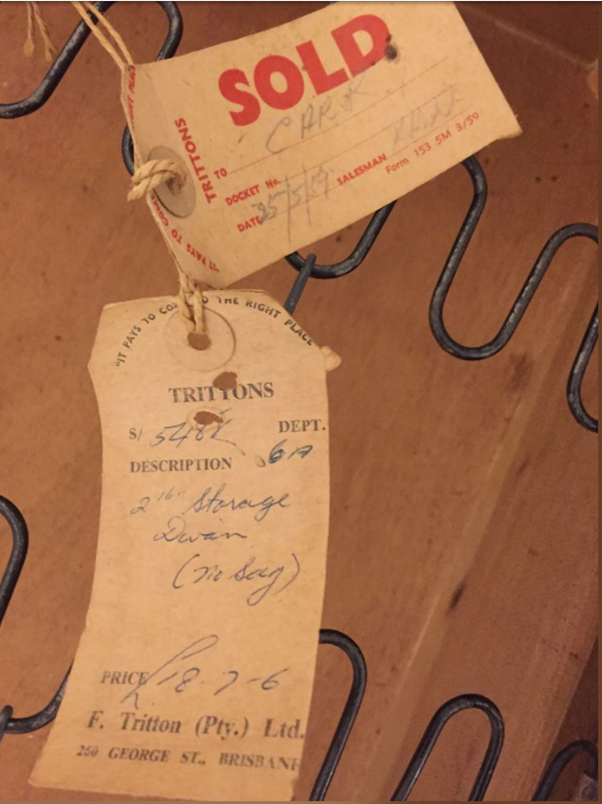
Dockets included in sale advertising on Facebook Marketplace.
There are a couple of excellent Trittons furnishing projects which can still be seen in Queensland. The heritage listed Hotel Corones in Charleville is one such place.
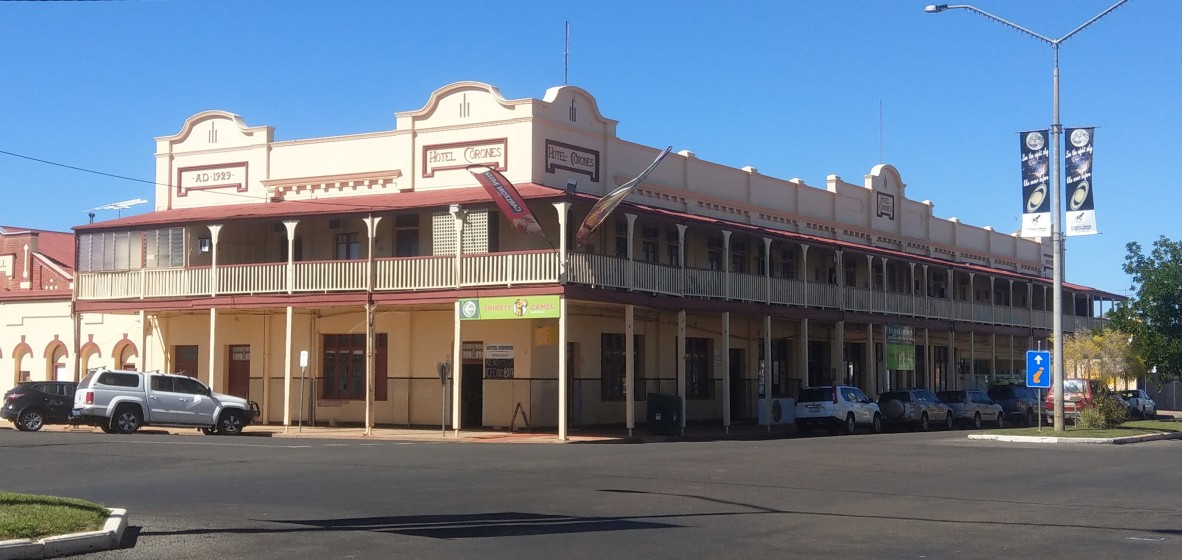
Hotel Corones, Charleville, 2019. Photo courtesy Mary Howells.
Harry Corones built this hotel in four stages between 1924 and 1929. It was designed by Toowoomba architect William Hodgen jnr. On the event of the opening of the third stage in December 1926, the local press (Australian Pastoralist, Grazing Farmers' and Selectors Gazette) asserted that the hotel was an ‘example of hotel architecture and comfort scarce equalled in the Southern Hemisphere and will undoubtedly be a great centre for all western men’. Charleville was also the terminus of the fledgeling QANTAS airline, which had a flight departing Charleville every Thursday morning at 5.30am for various places to the west. The flights were patronised by stock and station agents, who presumably needed a room overnight to meet the early flight. The newspaper described the interior furnishings. (3)
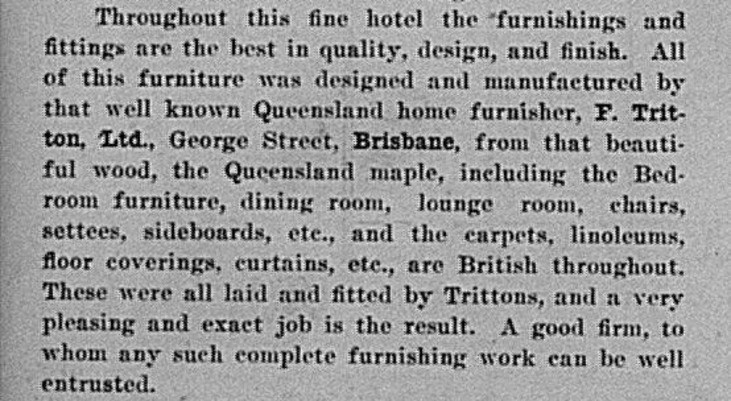
The Australian Pastoralist and Grazing Farmers’ and Selectors Gazette, 10 Dec 1926, p.18.
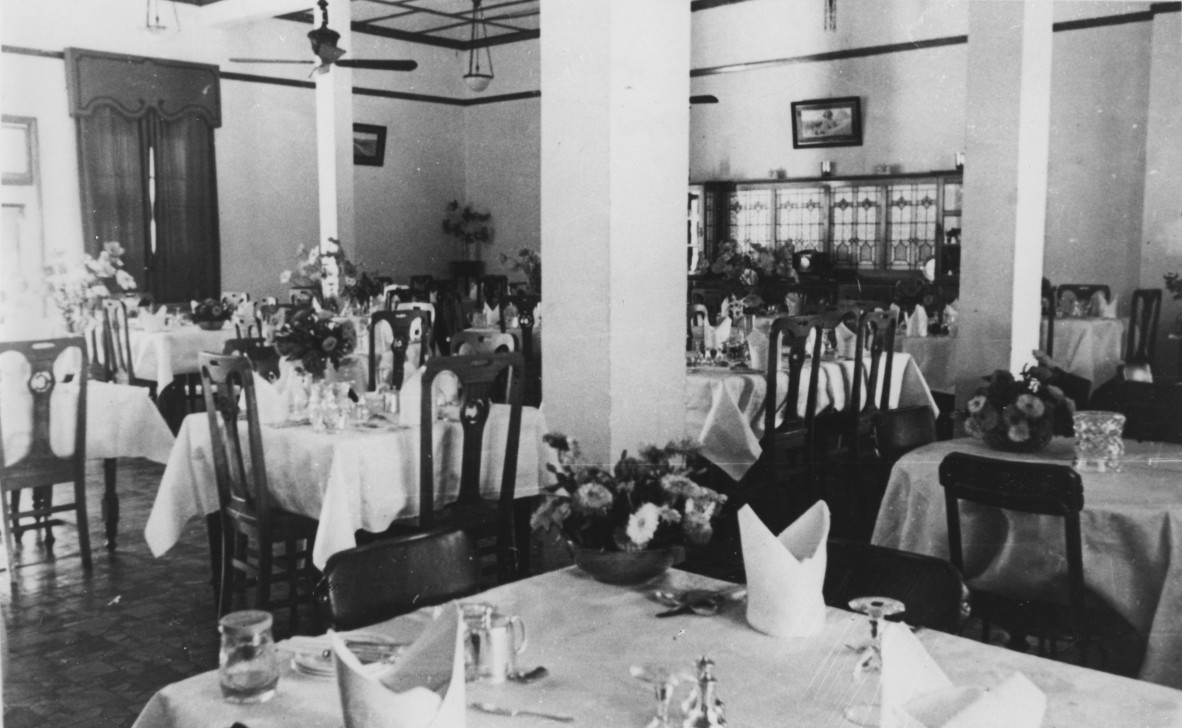
Dining Room Hotel Corones, circa 1930, (furnished by Trittons) note the large sideboard with lead lights. John Oxley Library, State Library of Queensland. Negative number 76030.
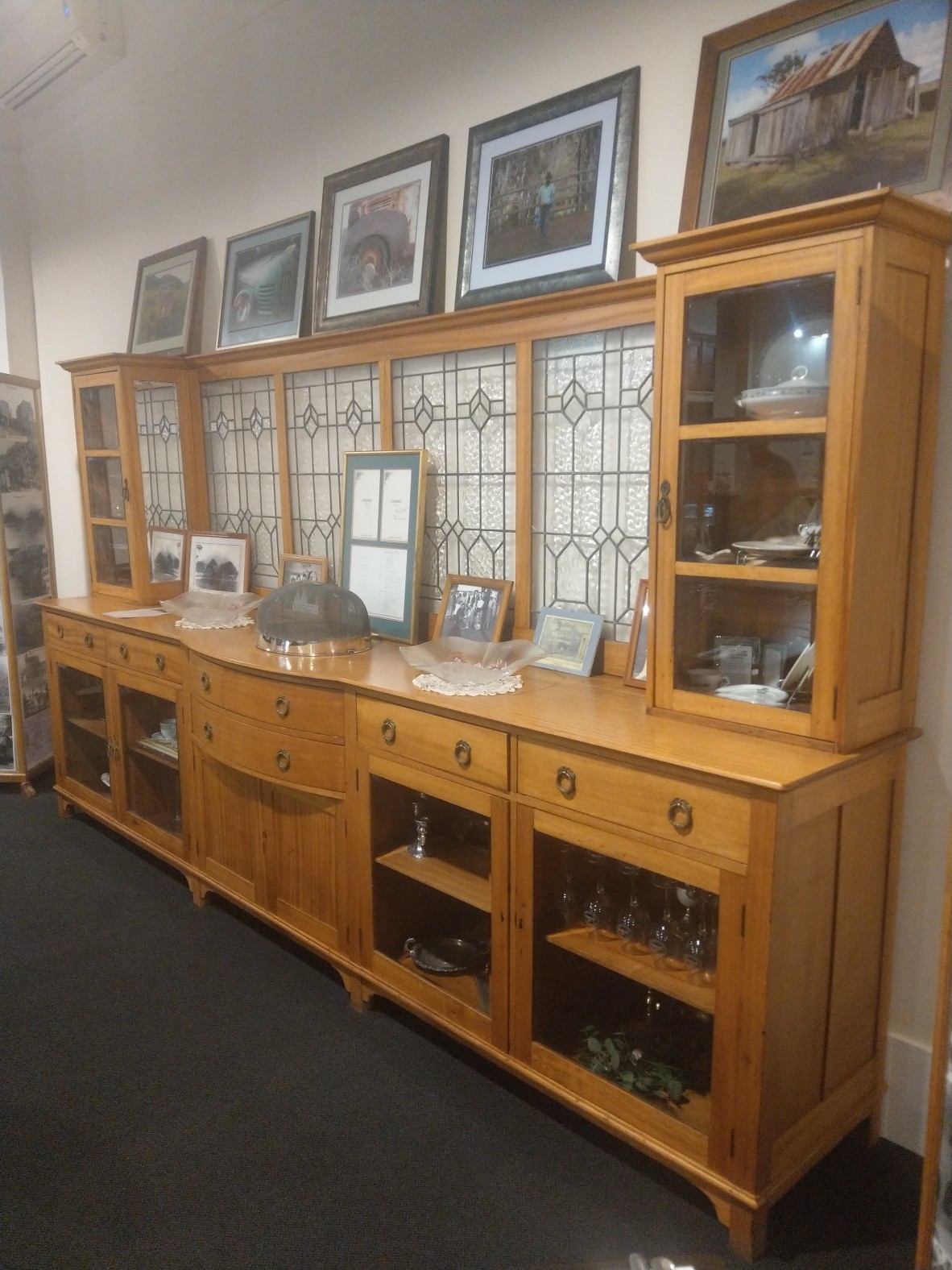
Hotel Corones sideboard (restored after the severe flood of April 1990, where 2m of water inundated the hotel), 2019. Photo courtesy Mary Howells.
The current hotel owners are embracing its furnishing heritage and retrieving old items from storage to be dusted off for new themed bedrooms. The owners state that the furniture is of such good quality, it only requires renewal with beeswax to bring it back to life. (4)
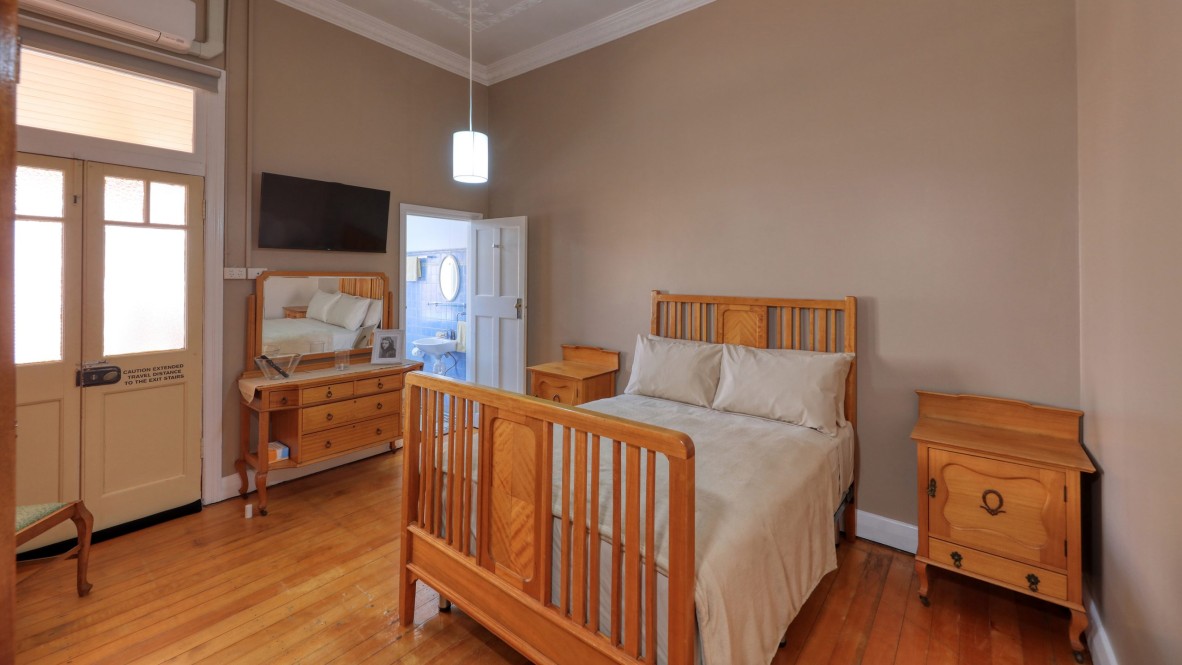
The Amy Johnson Room, Hotel Corones Charleville, reproduced with kind permission of the owner/director.
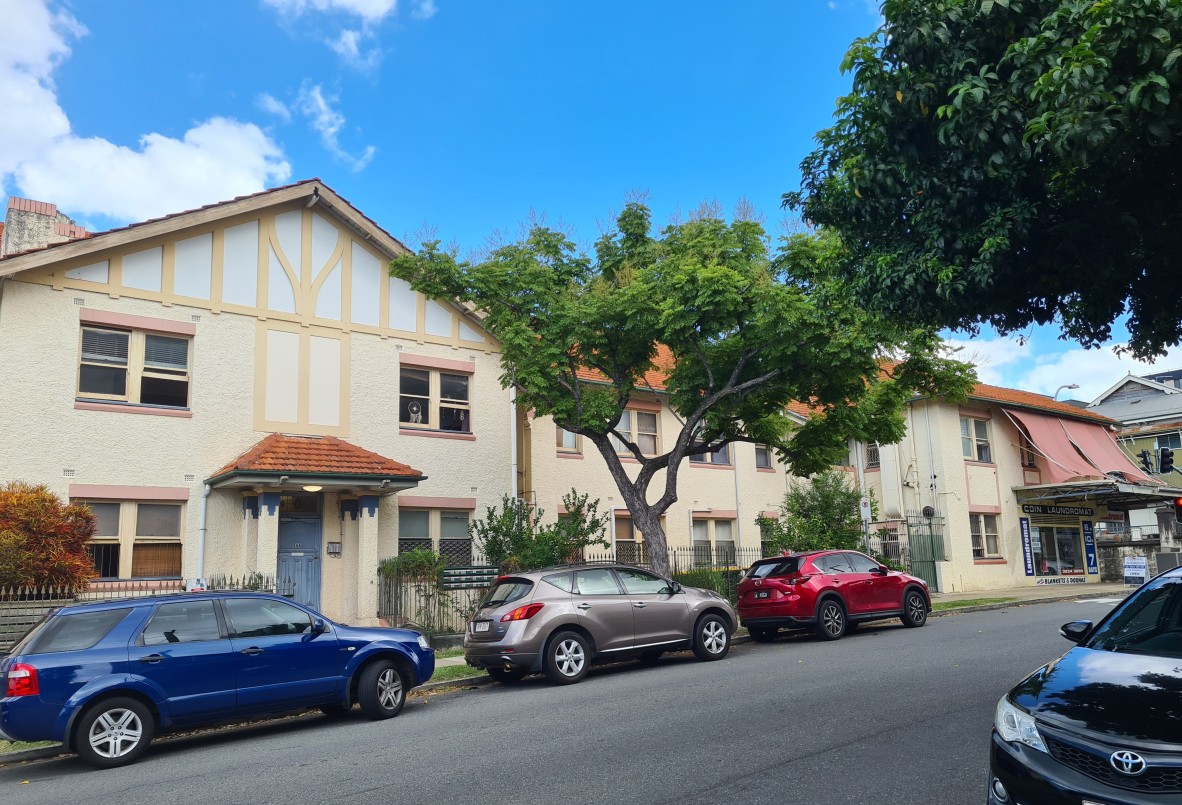
Avalon Flats from Harcourt Street, New Farm, 2021. Photo courtesy Mary Howells.
Avalon Flats (1929), corner of Brunswick Street and Harcourt Street New Farm, was designed by architects Hall and Prentice and contained 26 flats, each with a kitchen, bedroom, bathroom, and some with separate sitting rooms. Each flat was identified by a letter of the alphabet. There were shops to Brunswick Street on the ground floor and garaging off Harcourt Street. The flats were built by the Public Curator, executors of the estate of Eugene Doctor, replacing an earlier block of flats, destroyed by fire. While the flats were initially advertised as unfurnished, by April 1930 furnished flats were available. Trittons supplied furniture to the building during 1930 and it retains many original pieces and floor coverings. The building has been home to many artists over time whose works were the subject of an important exhibition at the Museum of Brisbane in 2005, and publishing of an accompanying book. The building is listed on the BCC heritage register. (5)
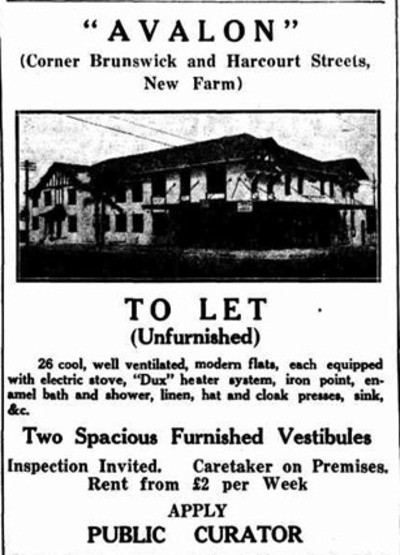
"Avalon", The Telegraph, 28 December 1929, p.20. National Library of Australia.
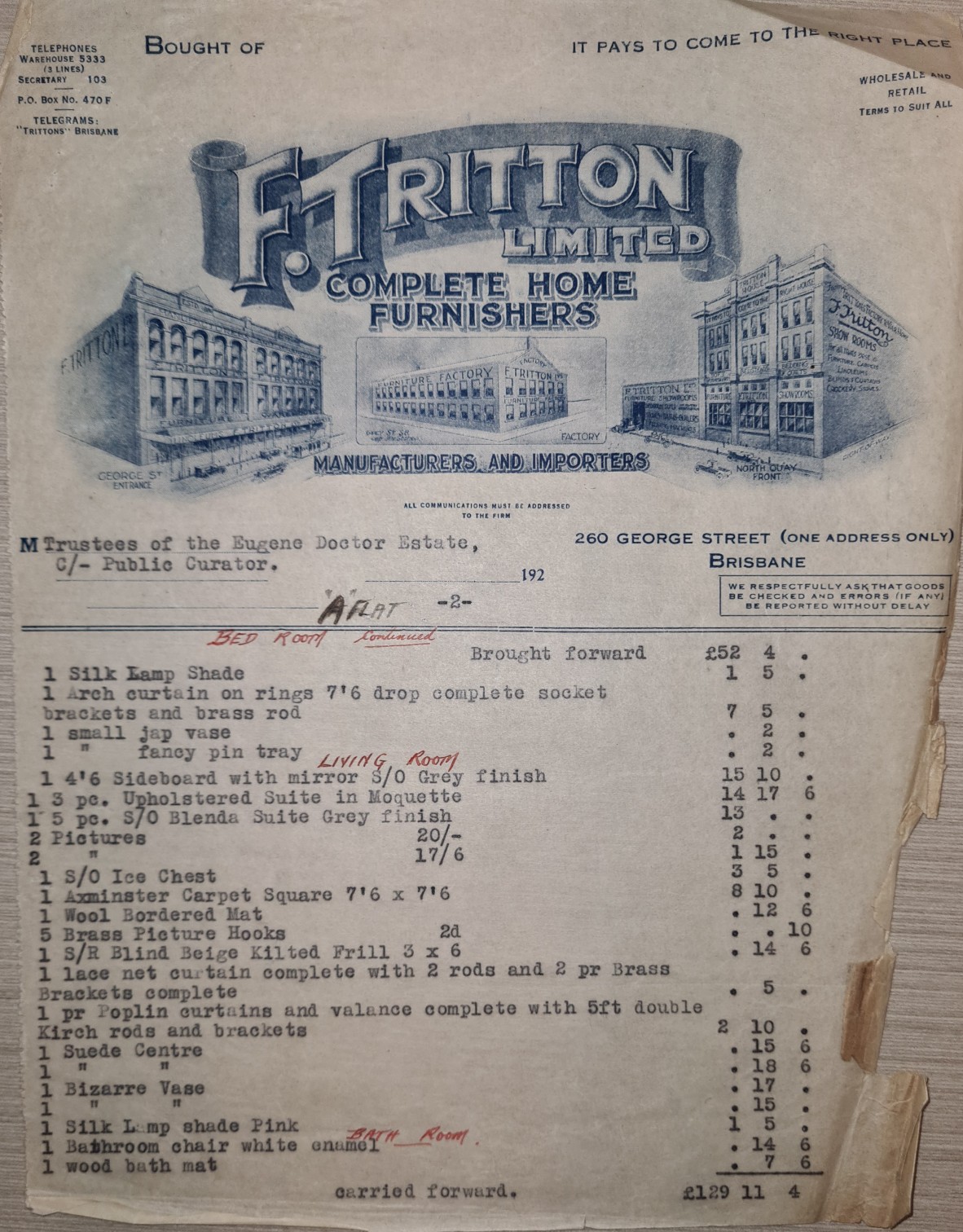
Furnishing invoice for Avalon Flats, Flat A, Ecclesiastical file for Eugene Doctor. Queensland State Archives, item ITM904691.
A number of homes associated with the Tritton family are on state and local heritage registers.
‘Eskgrove’ (Queensland Heritage Register, 600187) at Laidlaw Parade East Brisbane was the home of Fred Tritton’s brother Joseph Walter Tritton, between 1910 and his death in 1934, with his family retaining ownership until 1966. He had dabbled in numerous professions including stationery/fancy goods storekeeper, publican of the New Market Hotel in Roma Street, and furniture store owner in Fortitude Valley in the early 1920s.
‘Eastwood’ at Vulture Street East Brisbane, designed by Robin Dods, was built in 1907 and sold to John Tritton, Fred’s youngest brother, in 1911. Like his brothers, John started with a store at Wooloongabba before establishing his business as a real estate auctioneer in 1917. John and his wife Beatrice lived their entire lives in the house. It was transferred to their daughter, who lived there until 1971. The property is listed on the BCC heritage register.
‘Cotswold’ was the home of the youngest son of Fred and Eliza Tritton, John Cyril and his first wife Valetta. It was designed by his brother-in-law Ashley Shaw and completed in 1934. It is considered a fine example of old English architecture. The contents of the house were auctioned in May 1992, and presumably take pride of place in many Queensland homes. The property is listed on the BCC heritage register.
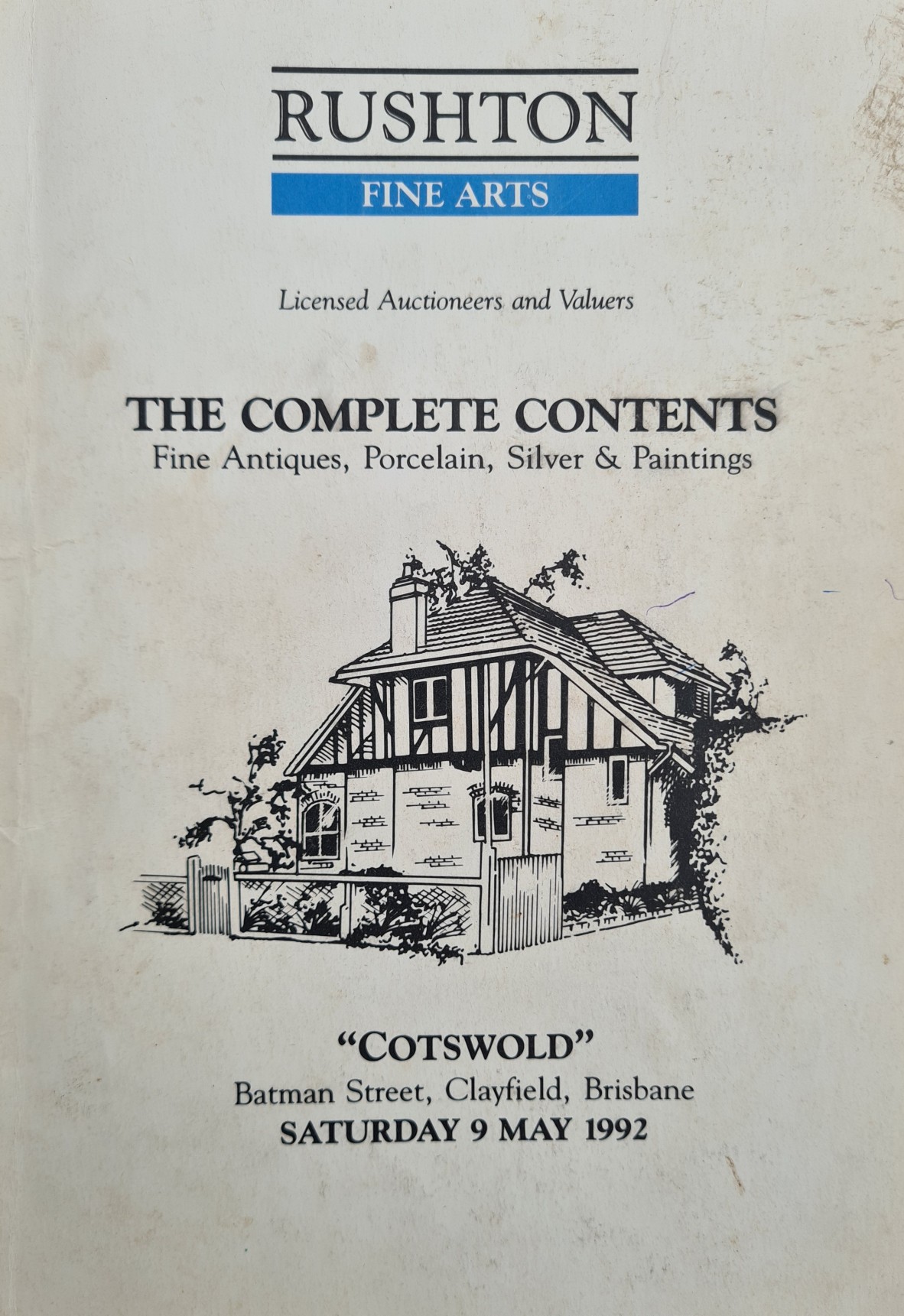
Auction of contents of Cotswold catalogue, 1992, donated to State Library collection.
Many generations of Tritton’s sons attended The Southport School. In 1954, Roy and Cyril Tritton presented a cheque for £4,000 to The Southport School, for the establishment of a bursary. The two-year scholarship is competitively offered to boys entering Year 9. The Trittons’ intent was to help families who could not afford the fees, so that their sons might gain a good education. (6)
Since commencing this project, so many Queenslanders from across the state, have told me that they have owned at least one piece of Trittons furniture, or their family members have. Many others had relatives working for Trittons. This is one of a series of photos of local factory workers, lined up in Russell Street, adjacent to the Trittons factory. The substation site on the LHS, was replaced in 1950 by the art deco South Brisbane Post Office. (image held in National Archives collection – online) In 2023 the site is being transformed into a new QPAC theatre.
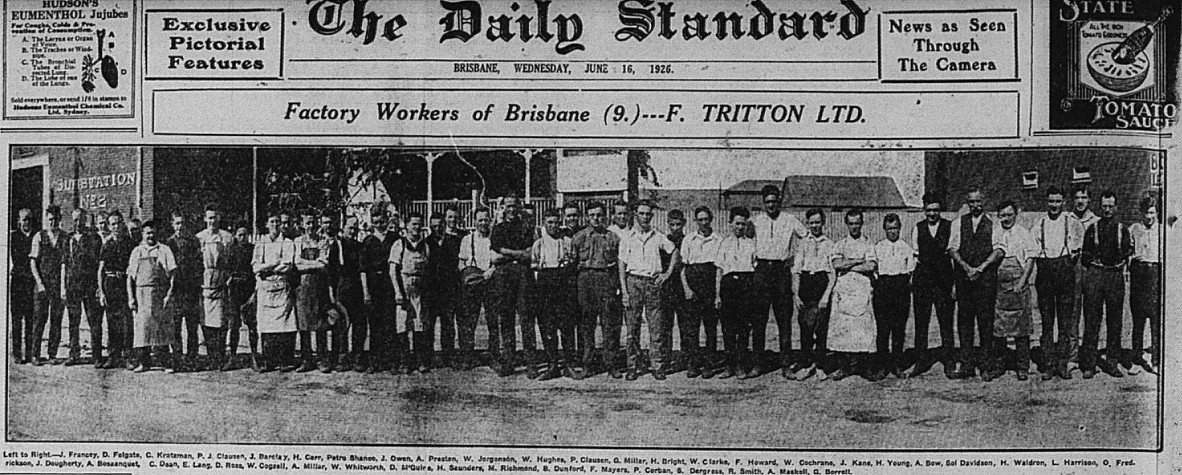
Trittons Factory Workers, Daily Standard, June 16, 1926, p1.
Left to Right: J. Francey, D. Felgate, C. Kratzman, P.J. Clausen, J. Barclay, H. Carr, Petra Shanee, J. Owen, A. Preston, W. Jorgenson, W. Hughes, P. Claussen, G. Millar, H. Bright, W. Clarke, F. Howard, W. Cochrane, J. Kane, H. Young, A. Bow, Sol Davidson, H. Waldron, L. Harrison, O. Fredrickson, J. Dougherty, A. Bosquanet, C. Dean, E. Lang, D. Ross, W. Gogzell, A. Millar, W. Whitworth, D. McGuire, H. Saunders, M. Richmond, B. Dunford, F. Mayers, P. Corban, S. Dergress, R. Smith, A. Maskell, G. Berrill.
Fred Tritton’s success may be attributed to his devotion to his business. He aimed to provide the best new furniture, both imported and locally produced in his own factory, keeping up with overseas trends through his regular travels to research the latest manufacturing methodologies and sourcing innovative suppliers for his Queensland customers. From 1907 he boasted that his factory was the best equipped in Queensland. By 1925 he claimed to have the largest despatch room in the state, and the Claude Neon advertising sign on his George Street store was the largest in Queensland in 1931. He was an advocate for forest conservation; he supported the arts; and successfully used advertising to grow his business, at a time when advertising was becoming a business of its own. Trittons Furniture prospered during the Depression when others fell by the wayside. Fred Tritton successfully harnessed his business to post-war growth and prosperity. Following his death, his sons Roy and Cyril expanded the retail component to the new suburban drive-in shopping centres and began a new manufacturing venture. The stores operated through to the early 1980s, with grandson Ken continuing the Nambour store until 1997. Trittons has truly Furnished Queensland!
Mary Howells
The Queensland Business Leaders Hall of Fame is an initiative of QUT Business School, State Library of Queensland.
See other blogs by Mary
-
Fred Tritton - From Second-hand Dealer to Furniture Manufacturer (1886-1910)
- Trittons - Gold Medal Manufacturer (1910 – 1930)
References
- Death of Eliza Tritton, Queensland Birth Death Marriages; Will of Eliza Tritton, Queensland State Archives, Ecclesiastical Files ITM752111; Eliza Tritton Awarded OBE, Australian Women, Imperial Honours, 1901-1989; https://www.womenaustralia.info/exhib/honours/t.html ; see also Michael Rogers, Anglican archivist https://anglicanfocus.org.au/2020/08/05/eliza-tritton-obe/; Commonwealth Electoral Rolls of 1972, show Roy, Irene and Cyril living at 151 Adelaide St Clayfield; Sale brochure for Elderslie, provided by Ken Tritton, Other family deaths in Queensland Birth Death Marriage indexes; ‘Tralmedie, a true colonial finds a grand home on the crest of a Pullenvale Hillock’, Sunday Mail, 6 July 1986, p.48; De Vries, Susanna, Nell: the Australian heiress who saved her husband from Stalin and the Nazis, a biography based on the lives of Nell Tritton and Alexander Kerensky, Boolarong Press, 2020, p.p. 218-222.
- Contextual information supplied by Ken Tritton. Sale of George Street see Certificate of Title11312107, Dept of Natural Resources; business registrations ASIC asic.gov.au; Demolition date established through comparisons between aerial imagery available on Qimagery: QPA 4450113 25 June 1986 the building was extant, but QAP 4601246 8 October 1986, shows a vacant lot – no newspaper reports of the demolition were found.
- Queensland Heritage Register, Hotel Corones, (QHR 601282), Department of Environment and Science; The Australian Pastoralist and Grazing Farmers’ and Selectors Gazette, 10 Dec 1926, p.18.
- Email discussions with Hotel Corones manager/director Marion Branson. See https://www.hotelcorones.com.au/accommodation/ for examples of themed bedrooms on offer, or the Champaigne baths honouring aviatrix Amy Johnson.
- Ricardo Felipe (ed), Avalon: Art and life of an Apartment Building, 2005, Museum of Brisbane, Fortitude Valley, Vanity Publishing.
- The Southport School https://www.tss.qld.edu.au/enrolment/scholarships-and-bursaries ; South Coast Bulletin, 8 December 1954, p.10.
Comments
Your email address will not be published.
We welcome relevant, respectful comments.